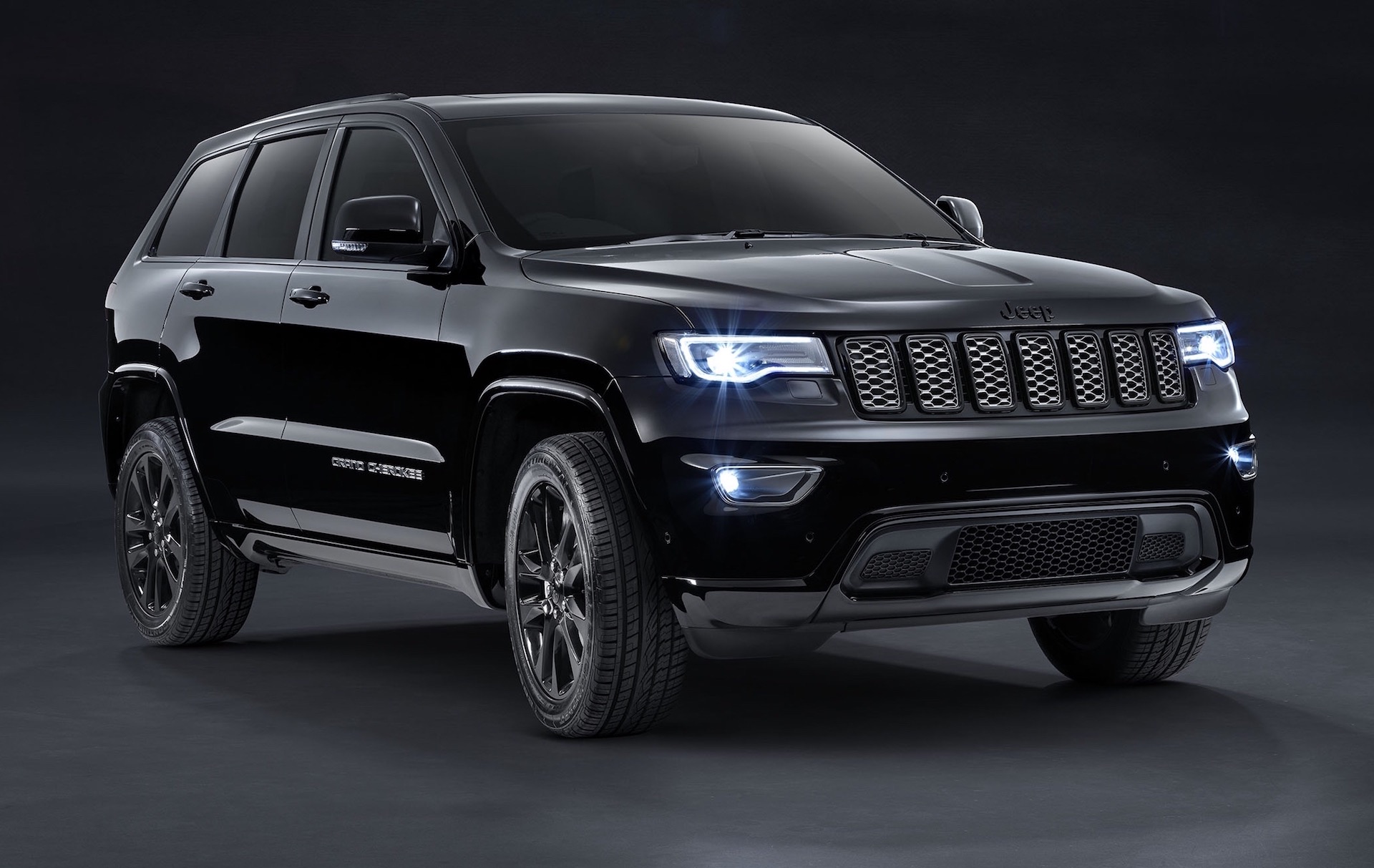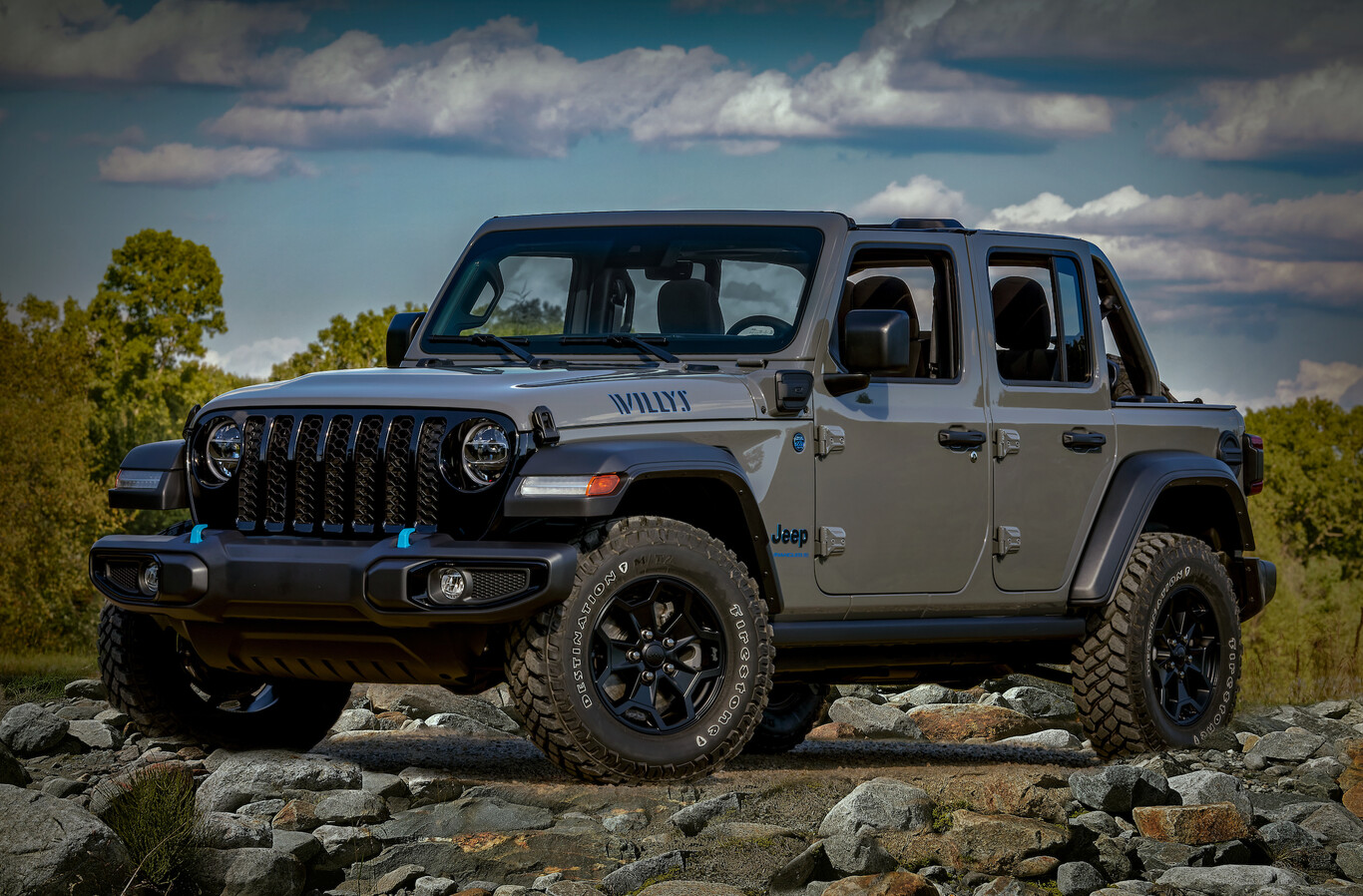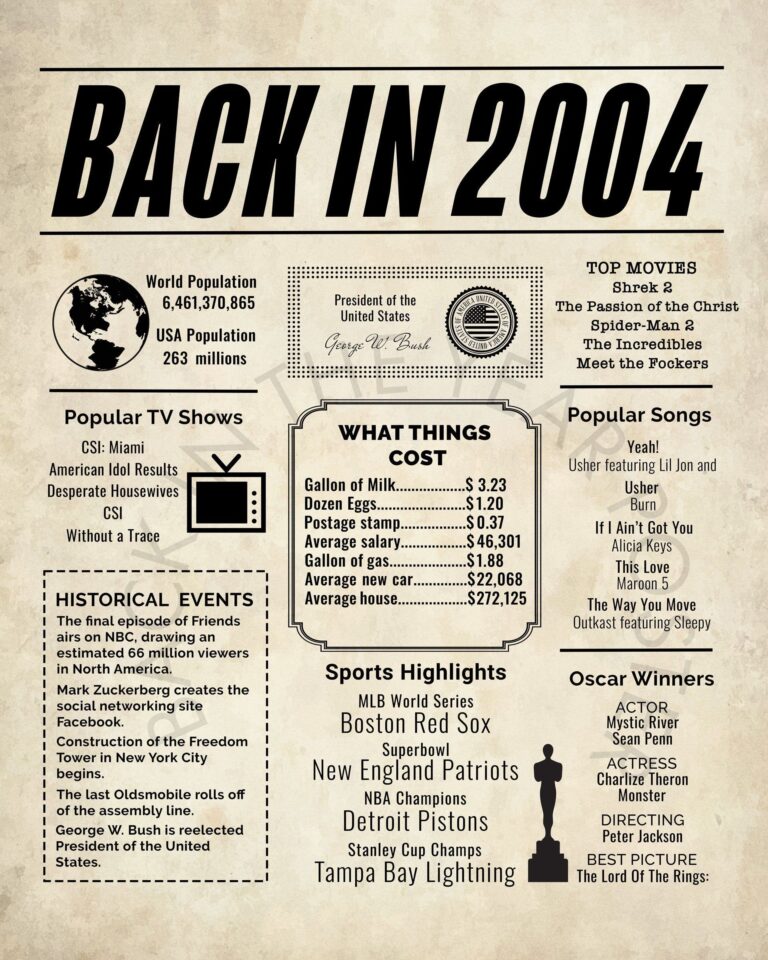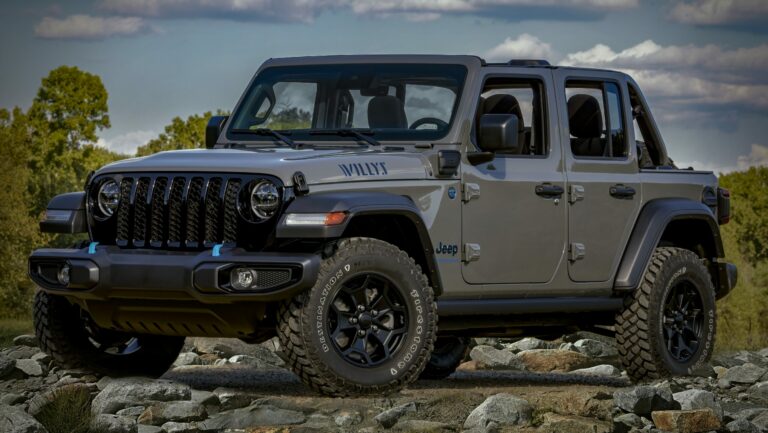Jeep Frame For Sale: Your Ultimate Guide to a Solid Foundation
Jeep Frame For Sale: Your Ultimate Guide to a Solid Foundation jeeps.truckstrend.com
The iconic Jeep, a symbol of freedom, adventure, and rugged capability, has conquered trails and hearts for decades. But even the most robust vehicles eventually succumb to the ravages of time, accidents, or the relentless march of rust. For many Jeep enthusiasts, the frame—the very backbone of the vehicle—becomes the weakest link. This is where the quest for a "Jeep Frame For Sale" begins, a journey that can breathe new life into a beloved classic, mend a damaged daily driver, or serve as the robust foundation for an extreme custom build.
This comprehensive guide will delve into everything you need to know about finding, evaluating, and utilizing a replacement Jeep frame. Whether you’re an experienced mechanic, a passionate DIYer, or just starting your first restoration project, understanding the nuances of a frame purchase is crucial for a successful outcome.
Jeep Frame For Sale: Your Ultimate Guide to a Solid Foundation
Why Buy a Jeep Frame? The Foundation of Revival and Reinvention
The decision to purchase a standalone Jeep frame is typically driven by one of several compelling reasons, each pointing to the frame as a critical component in a vehicle’s longevity and performance:
- Combating Severe Rust and Corrosion: This is perhaps the most common reason. Jeeps, especially older models like the CJ and YJ, are notorious for frame rust, particularly in areas exposed to road salt, moisture, or harsh off-road conditions. Once rust compromises structural integrity, repair can be extensive and often less cost-effective than a full frame replacement.
- Repairing Accident Damage: A significant impact can bend, twist, or crack a frame beyond safe repair. A replacement frame ensures the vehicle’s structural alignment and safety are fully restored.
- Restoration Projects: For enthusiasts restoring a classic Jeep to its original glory, a pristine or well-conditioned frame is essential. It provides a solid, straight platform for rebuilding the entire vehicle, ensuring proper body alignment and suspension geometry.
- Custom Builds and Modifications: For those pushing the boundaries of off-roading or creating unique show vehicles, a bare frame offers the perfect starting point. It allows for modifications like stretching the wheelbase, adding heavy-duty mounts for engine swaps (e.g., LS conversions), or fabricating custom suspension setups without compromising the integrity of the original, potentially fatigued frame.
- Donor Vehicles: Sometimes, a complete vehicle is purchased solely for its frame, especially if other components are salvageable, or if the frame is of a specific, hard-to-find type.
![]()
Types of Jeep Frames Available: OEM vs. Aftermarket
When searching for a Jeep frame, you’ll primarily encounter two categories:
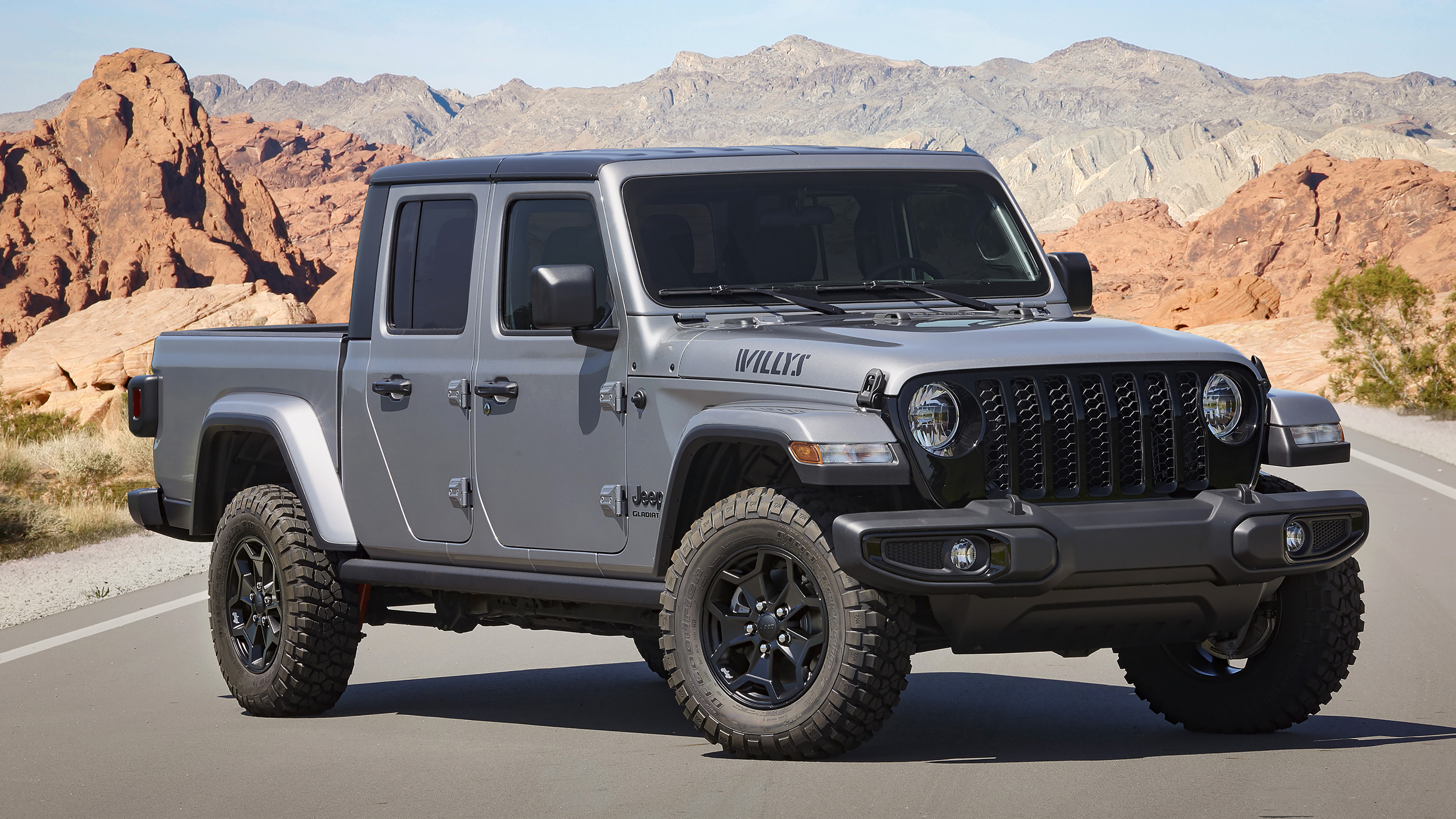
OEM (Original Equipment Manufacturer) Frames: These are frames manufactured by Jeep (or their original suppliers).
- Used OEM Frames: Sourced from salvage yards, donor vehicles, or private sellers. Their condition varies wildly, from nearly new to heavily rusted. They offer original fitment and are often the most budget-friendly option.
- New Old Stock (NOS) OEM Frames: Extremely rare, these are brand-new frames that were never used or installed. They command premium prices due to their pristine condition and originality.
- Pros: Original fitment, potentially lower cost (used).
- Cons: Used frames often have existing rust or hidden damage, may require significant preparation, limited availability for older models.

-
Aftermarket/Replacement Frames: These frames are manufactured by third-party companies specifically designed to replace OEM frames. Many are engineered with improvements.
- Pros: Often made from thicker, stronger steel; improved rust prevention (e.g., E-coating, powder coating); precise manufacturing for better alignment; readily available for popular models (CJ, YJ, TJ). Some even offer stretched or custom configurations.
- Cons: Generally more expensive than used OEM frames; may require minor adjustments for exact fitment with certain OEM components.
- Notable Aftermarket Manufacturers: Companies like Throttle Down Kustoms (TDK), Aqualu Industries (aluminum frames), and various smaller fabricators offer high-quality replacement frames.
Where to Find a Jeep Frame For Sale
The hunt for the right frame can take you to several different avenues:
- Online Marketplaces:
- eBay: A vast inventory, but requires careful inspection of photos and seller reputation. Shipping can be expensive.
- Craigslist/Facebook Marketplace: Excellent for local finds, allowing for in-person inspection before purchase. Be wary of scams.
- Specialized Jeep Forums & Classifieds: Websites like Pirate4x4, JeepForum, or dedicated Facebook groups for specific Jeep models (e.g., "Jeep CJ-7 Owners") often have members selling parts.
- Salvage Yards/Auto Recyclers: These are goldmines for used OEM frames. Visit in person to inspect the frame thoroughly. Prices are often negotiable.
- Aftermarket Frame Manufacturers: If you’re looking for a new, stronger frame, purchasing directly from manufacturers like TDK, Aqualu, or others ensures quality and customer support.
- Jeep Restoration Shops: Many shops that specialize in Jeep restorations or custom builds may have frames for sale or know where to source them. They might also offer installation services.
- Word of Mouth: Sometimes, the best deals come from fellow enthusiasts or local mechanics who know someone selling parts.
What to Look For When Buying a Jeep Frame: A Critical Inspection Guide
Purchasing a frame, especially a used one, is a significant investment. Thorough inspection is paramount to avoid future headaches and costly surprises.
- Rust and Corrosion: This is the #1 enemy.
- Common Trouble Spots: Pay close attention to body mount locations, spring perches, control arm mounts, skid plate mounts, the rear crossmember, and anywhere water or mud can collect.
- Severity: Surface rust is manageable. Flaky, bubbling, or penetrating rust (holes) indicates severe structural compromise. Use a hammer or screwdriver to gently tap areas; if it crumbles, walk away.
- Straightness and Alignment:
- Visual Inspection: Look down the length of the frame from front to back and side to side. Any obvious bends, twists, or kinks are red flags.
- Measurements: If possible, bring a tape measure. Compare key measurements (e.g., diagonal measurements from opposing corners, width at various points) to factory specifications if you can find them. Inconsistencies indicate a bent frame.
- Accident History: Look for signs of repair welds, Bondo, or fresh paint in localized areas that might hide damage.
- Welds:
- Original Welds: Should be clean, consistent, and uniform.
- Repair Welds: Examine any non-factory welds closely. Are they professional and strong, or do they look like amateur patchwork? Poor welds are a major safety concern.
- VIN and Paperwork:
- VIN Matching: For full frames, ensure the VIN tag is present and matches any accompanying title or bill of sale. State laws vary regarding VIN transfer and re-stamping for replacement frames. This is crucial for legal registration.
- Bill of Sale: Always get a detailed bill of sale, especially for used frames, noting the VIN, date, and seller’s information.
- Included Components:
- Crossmembers: Are the transmission crossmember, engine mounts, and other critical crossmembers present and in good condition?
- Mounts: Check the condition of all body mounts, suspension mounts (leaf spring perches, control arm brackets), and steering box mounts. Repairing or replacing these can add significant cost.
- Overall Condition: Assess the general cleanliness and care the frame received. A well-maintained frame is often a sign of a well-maintained vehicle.
The Process of Replacing a Jeep Frame: A Major Undertaking
A frame swap is not a trivial task; it requires significant time, tools, and mechanical aptitude.
- Preparation and Documentation: Take numerous photos and videos of the existing vehicle, documenting how everything connects. Label all wires, hoses, and bolts.
- Disassembly: This is the most labor-intensive part.
- Body Removal: The entire body must be unbolted and lifted clear of the old frame. This usually requires a lift, engine hoist, or several strong friends.
- Drivetrain & Suspension Removal: Engine, transmission, transfer case, axles, suspension components, steering, and fuel tank must all be disconnected and removed from the old frame.
- Frame Swap:
- Position the new frame precisely.
- Transfer all components from the old frame to the new one. This is where meticulous labeling pays off.
- Reassembly:
- Lower the body onto the new frame, aligning all body mounts.
- Reconnect all drivetrain, suspension, steering, braking, fuel, and electrical systems.
- Refill fluids, bleed brakes, and perform a thorough inspection before the first start-up.
- Challenges: This project demands a well-equipped garage, specialized tools (e.g., body lift, transmission jack), and a good understanding of automotive systems. It can take weeks or even months for a DIYer. Many choose to outsource parts of this process to professional shops.
Legal and Registration Considerations
This is a critical, often overlooked aspect. Laws vary significantly by state/province:
- VIN Transfer: Some jurisdictions allow the VIN from the old frame to be transferred to the new frame, or for the vehicle to be registered under the original VIN if the majority of the vehicle (body, engine) remains the same.
- Salvage/Rebuilt Titles: If the original frame was totaled, the vehicle may have a salvage title. A frame swap might require a "rebuilt" title inspection.
- Custom Builds: For heavily modified frames, you may need to apply for a "special construction" or "assembled vehicle" title, which involves inspections to ensure roadworthiness and safety standards are met. Always check with your local Department of Motor Vehicles (DMV) or equivalent agency before starting the project.
Estimated Price Guide for Jeep Frames For Sale
Please note that prices are highly variable based on condition, model year, new vs. used, and market demand. These are rough estimates for general guidance.
| Jeep Model | Frame Type | Condition/Description | Estimated Price Range (USD) | Notes |
|---|---|---|---|---|
| Jeep CJ | Used OEM (CJ-5, CJ-7, CJ-8) | Moderate surface rust, no major bends, solid mounts | $800 – $2,500 | Often requires blasting & paint; check for sag/twist near rear. |
| Aftermarket (CJ-5, CJ-7, CJ-8) | New, bare steel or E-coated, heavy-duty | $3,000 – $5,500+ | Bolt-on replacement, often stronger than original. | |
| Jeep YJ | Used OEM | Minimal rust, straight | $700 – $2,000 | Check skid plate area and rear crossmember for rust. |
| Aftermarket | New, bare steel or coated, improved design | $3,000 – $5,000+ | Good option for rust-prone YJs. | |
| Jeep TJ | Used OEM | Minor surface rust, straight | $1,000 – $3,000 | Rear control arm mounts, skid plate area, and steering box area are key. |
| Aftermarket | New, heavy-duty, often stretched options | $3,500 – $6,000+ | Popular for custom builds due to strength. | |
| Jeep JK | Used OEM | Straight, no major damage, minor surface rust | $1,500 – $4,000 | Less common to replace due to age, but accidents happen. |
| Aftermarket | New, specialized for custom builds (e.g., stretched) | $5,000 – $8,000+ | Niche market for extreme builds. | |
| Jeep JL | Used OEM | Accident repair only, very low mileage | $2,000 – $5,000+ | Very new, only for collision repair; less likely to be sold bare. |
Shipping costs for a frame can range from $500 to $1,500+ depending on distance and carrier.
Frequently Asked Questions (FAQ) About Jeep Frames For Sale
Q1: Is it worth replacing a rusted Jeep frame?
A1: For severe rust that compromises structural integrity, a frame replacement is often safer and more cost-effective than extensive rust repair. For sentimental value, custom builds, or classic restorations, it’s definitely worth it. For a daily driver with minor surface rust, rust repair might be sufficient.
Q2: Can I use a frame from a different year/model Jeep?
A2: Generally, no, without significant fabrication. While some components might be interchangeable, the frames themselves are designed specifically for their model year range (e.g., CJ frames are different from YJ, and YJ from TJ). Swapping frames between different models is a highly advanced custom fabrication project.
Q3: Do I need a title for a bare Jeep frame?
A3: Laws vary by state/country. In many places, if the frame has a VIN, it is considered a vehicle component with a unique identity. It’s always best to obtain a bill of sale and check with your local DMV about transferring VINs or registering a vehicle with a replacement frame. Failure to do so can lead to legal complications down the road.
Q4: How much does it cost to ship a Jeep frame?
A4: Shipping a bare frame is expensive due to its size and weight. Costs typically range from $500 to $1,500+ within the continental US, depending on distance, carrier, and whether it’s shipped to a commercial or residential address.
Q5: What tools do I need for a frame swap?
A5: A comprehensive set of hand tools, sockets, wrenches, and specialized equipment like an engine hoist, transmission jack, floor jacks, jack stands, and potentially a body lift or overhead gantry. An impact wrench is highly recommended. Welding equipment might be needed for repairs or modifications.
Q6: How long does a frame swap typically take?
A6: For an experienced mechanic with all the right tools, it could take a dedicated week or two. For a DIY enthusiast working part-time, it’s often a multi-month project, especially when accounting for unforeseen issues, parts ordering, and preparation.
Q7: Are aftermarket frames better than OEM?
A7: Often, yes. Aftermarket frames are frequently built with thicker steel, improved welding techniques, and better rust prevention coatings (like E-coating or powder coating). Many are designed to address common weak points of the original OEM frames and can even be ordered with custom modifications like stretched wheelbases.
Conclusion: Building on a Solid Foundation
The search for a "Jeep Frame For Sale" marks the beginning of an ambitious but incredibly rewarding project. Whether you’re resurrecting a rust-eaten classic, repairing accident damage, or laying the groundwork for a truly unique custom build, the frame is your vehicle’s fundamental structure.
By understanding the types of frames available, knowing where to source them, and conducting a meticulous inspection, you can make an informed decision that ensures safety, longevity, and performance. While a frame swap is a significant undertaking, the satisfaction of seeing your Jeep reborn with a solid, reliable foundation is unparalleled. Approach the process with thorough research, careful planning, and a commitment to quality, and you’ll be back on the trails with confidence in no time.
